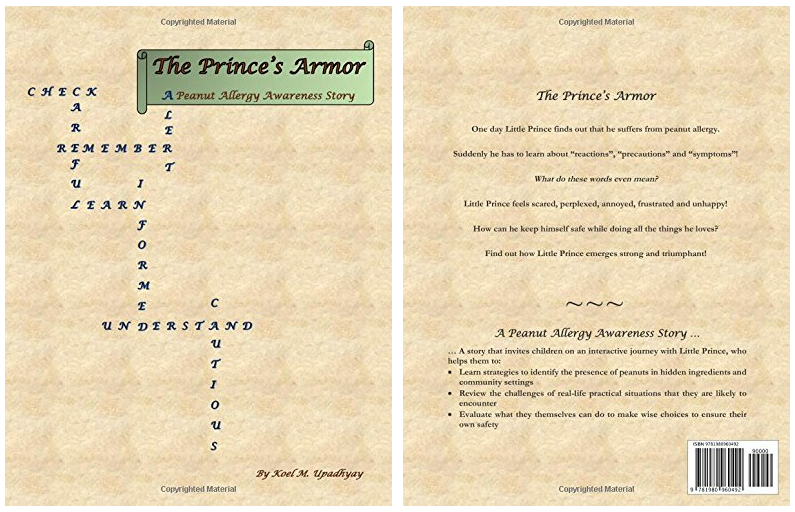Oral Immunotherapy (also known as OIT) is defined as an experimental desensitization treatment for food allergy. It involves ingesting increasing amounts of an allergen (starting with a small dose) over time with the hope of developing a tolerance to that allergen.
This treatment is not yet FDA approved and should be administered only by a licensed physician, in an appropriate medical facility, as anaphylactic reactions can occur.
I recently wrote an article titled Peanut Allergy Cure in which I discussed Oral Immunotherapy and my own son’s experience with it through a clinical trial/study. This article is a follow-up to share how we have progressed over the last year and where we are at today.
We started Oral Immunotherapy through a peanut allergy clinical trial at Children’s Hospital in Boston in June 2011. In February of 2012, J passed a peanut food challenge (the equivalent of 20 peanuts) without reaction.
Amazing right? It absolutely is amazing. However the experience was, and still is, difficult at times.
Backstory
J was diagnosed with a peanut allergy (and numerous other food allergies) at around 18 months of age. He developed a large half-dollar size weal on the skin prick test and his blood test results (IgE/RAST) hovered near 100. Over the years, the weal size decreased as did the blood test results. J entered the study with a weal size around a quarter (give or take) and an IgE of about 58.
This particular study involves the use of Xolair (Omalizumab). Xolair is an injectable prescription allergy/asthma medicine for patients with moderate to severe allergic asthma.
The theory behind the study is that the Xolair injections should lessen any reaction from ingesting a daily peanut protein dose. Over time we decreased/stopped the Xolair injections while increasing the peanut protein dose. This method allowed us to increase the peanut dose at a more rapid rate compared to other studies that did not involve the use of Xolair.
It obviously worked for us. J went from having a reaction to a small amount of peanut at the beginning of the study, a requirement for participating, to passing a food challenge 9-10 months later. His test results also continued to go down. In August of 2012 his peanut IgE was 23.
Where We Are Today
It has been about 2 years since J passed the peanut food challenge. We still go in to Children’s Hospital for regular follow-up visits as a continuation of the study. J continues to take his peanut doses. However, we are on an every other day schedule versus every day. His last skin prick was clear and his blood results decreased as well. Our hope is that his tolerance remains with the dosage change. If so, the next step might be a once or twice weekly dose instead of every other day.
The Bad News
If you read my previous Peanut Allergy Cure post, you know that there were many bumps in our Oral Immunotherapy road.
J still does not like peanut in any way, shape or form. He gets his dose as a peanut flour filled gel capsule. Twelve capsules a day (every other day) that I hand fill.
Since these studies are so new, there is no long term data on what will happen if we stop taking doses regularly. So for now, we need to continue the doses indefinitely.
J also still has an occasional reaction. Sometimes mild and once in a long while – severe. These reactions are usually when his immune system is compromised by a cold or other illness. However, we have noticed that he also has, or has developed, exercise induced anaphylaxis. These episodes come on when he ingests his peanut dose and then exercises. The reactions often occur up to 4 hours after he’s ingested his dose. This has become problematic as he participates in numerous sports. Even less rigorous outdoor play has triggered a reaction. We still continue to give him his dose, half in the morning and half in the evening.
Why We Do It
Numerous readers have asked why we do it. Why do we continue to give our son a food he is allergic to? Why do we make him consume something he hates? Those are valid questions.
First let me state that this is his choice. We did not force him to do the study nor do we make him continue the treatment. He is nearly 11 years old and has had a say every step of the way.
He chooses to do this because he hates having a food allergy. He hates being left out. He hates not being able to eat things he wants to eat because the item may have come into contact with peanuts.
We choose to continue because it has made him happier. It has increased his and our quality of life. I worry less about accidental ingestion. I worry less about him getting older and having to take on more responsibility for himself and his food allergies. Our/his food choices have expanded.
Oral Immunotherapy is not for everyone. It’s not an exact science. It doesn’t work for every individual. For those it does work for, it’s not without complications. There are days when I wonder if we are doing the right thing.
There are no right or wrong answers. I’m just thankful that we were fortunate enough to have this opportunity and that medical professionals are working diligently on a food allergy treatment for our kiddos.
Click on the link below to be taken to a copy of the study results from the Journal of Allergy and Clinical Immunology Vol. 132, Issue 6, Pages 1368-1374.
Peanut Allergy Study Results
http://www.bestallergysites.com/wp-content/uploads/Peanut-Allergy-Study-Boston.pdf
UPDATE: See Peanut Oral Immunotherapy Update for an update on where we are at today.




COMMENTS